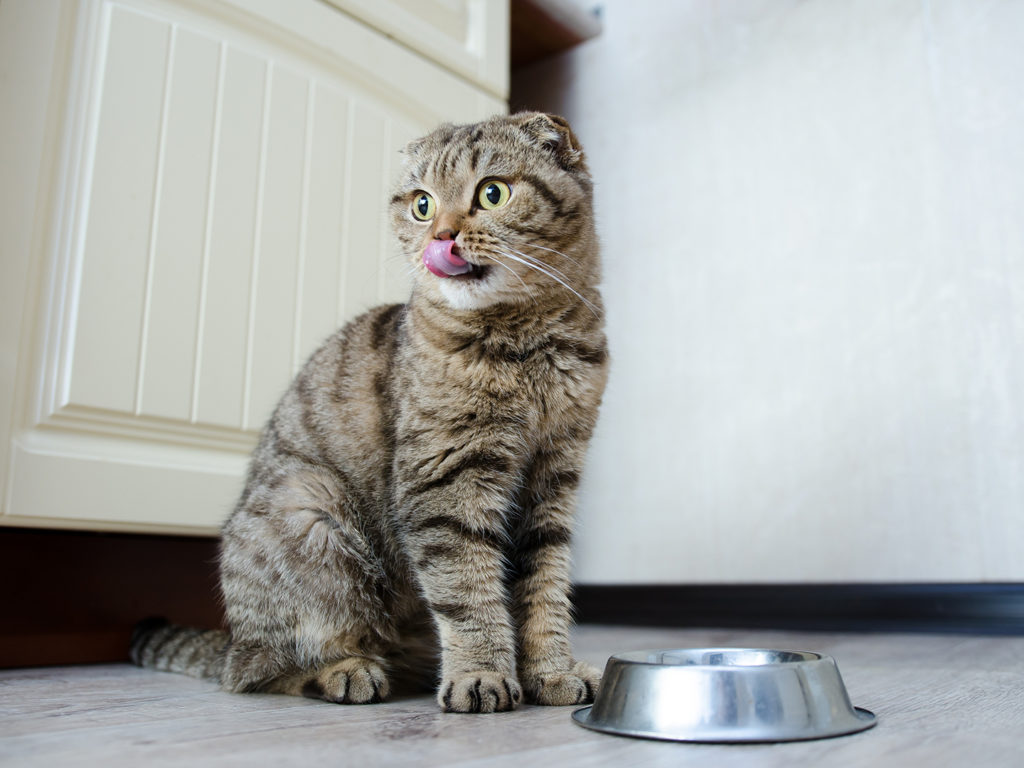Feline Nutrition Part 2: What To Know About Feeding Your Cat Prescription Food

With so many different cat foods on the market, it can be difficult to choose the best option for your feline friend. When it comes to cats with illnesses and chronic conditions, prescription foods are a great option for giving your cat the tailored diet it needs.
These diets can be prescribed by a veterinarian for a variety of conditions, like chronic kidney disease and diabetes, and other medical needs, like weight loss and dental care.
While prescription diets are an important tool for managing cats’ medical needs, they should only be fed under the guidance of a veterinarian, according to Dr. Debra Zoran, a professor at the Texas A&M College of Veterinary Medicine & Biomedical Sciences.
“Prescription food must be fed like medicine and only administered as intended,” Zoran said. “These foods have a specific purpose and are meant to be fed only to cats with specific diseases.”
While some may think that feeding a healthy cat prescription food meant for a specific condition will help prevent that condition, that is not the case; in fact, this can cause negative side effects that can lead to serious health issues.
For example, prescription diets for chronic kidney disease (CKD) usually contain less than half the amount of protein normally present in cat foods because cats with CKD have more difficulty excreting protein waste products from their kidneys. Feeding this diet to a cat without CKD, however, would not provide enough protein and would have an altered mineral balance compared to what a healthy cat needs for a complete and balanced diet.
“Healthy cats that are being fed prescription CKD diets will start to lose their muscle mass because their body will use its own muscle to replace what is missing in the diet,” Zoran said. “They will also often gain weight because of the added fat and carbohydrates in the diet that are there to replace the protein.”
The potential consequences make it important for owners with multiple cats to feed each separately if only one is on a prescription diet or to at least talk to a veterinarian about the diet situation in your household.
Fortunately, there is no need to worry if one of the cats sneaks a few bites of the other’s food every now and again.
“It is not a problem if your healthy cat eats some of the prescription food occasionally—just as it will not be terrible for a cat with a specific disease to eat some of the non-prescription food once in a while,” Zoran said. “Ultimately, many of the special diets are just not intended for normal, healthy adult cats as a maintenance diet.
“However, that is not true for all prescription diets,” she said. “For example, prescription diets for cats with allergies or intestinal problems are complete and balanced and could be fed to a normal healthy cat. The difference is that the diet may have a different protein source (venison for a cat allergic to beef) or a more highly digestible mix of ingredients (for cats with intestinal problems). Although these diets are safe to feed to any cat, they are more expensive and unnecessary for a cat that doesn’t have a health issue.”
If a veterinarian determines that your cat would benefit from eating a prescription diet, you may be able to purchase the food directly through their clinic. Otherwise, the veterinarian can provide a prescription card that can be used to buy the food at most pet stores and many online retailers.
Whether your cat is diagnosed with a specific illness or is simply needing a healthier lifestyle, prescription foods may be a beneficial addition to their regular medical care. Sometimes something as simple as switching foods can even be the key to getting many more years with your loving companion.
Pet Talk is a service of the College of Veterinary Medicine & Biomedical Sciences, Texas A&M University. Stories can be viewed on the web at vetmed.tamu.edu/news/pet-talk. Suggestions for future topics may be directed to editor@cvm.tamu.edu.


